
Featured Blog | This community-written post highlights the best of what the game industry has to offer. Read more like it on the Game Developer Blogs or learn how to Submit Your Own Blog Post
The 4 Types of Randomness in Hearthstone
Let's take a look at what types of random effects Hearthstone utilizes in its design.

This is a repost from my personal blog.
Card games, trading and collectible including, always have had certain randomness to them – at least because the deck is always shuffled so you never know in which order you’ll draw your cards. Hearthstone, being a fully digital card game, tries to expand upon what kind of random effects one can achieve while playing. Some people are happy with these experiments, some are not. But let’s take a look from design perspective at the different kind of randomness in Hearthstone and how they can be perceived by players.
Strategic Randomness
This is the kind of randomness that is deemed most fair by players. Sure, someone might get really lucky, but it is all expected and can be played around. A very good example of cards with strategic randomness are Shaman’s varied damage spells, like Lightning Storm for example. Lightning Storm deals 2-3 damage to all enemy minions, and the damage value for each minion is decided separately.
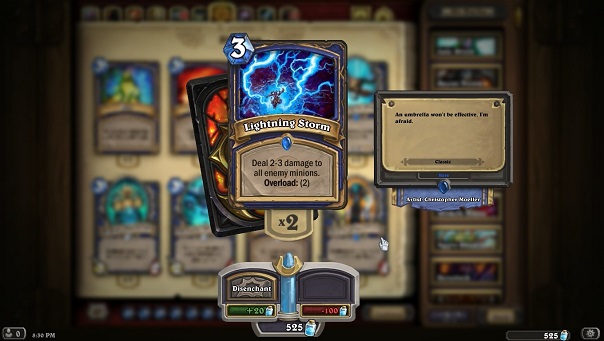
The 4 Types of Randomness in Hearthstone
So if you’re playing against a Shaman, knowing full and well that Lightning Storm is one of his staple board removals, you might take a risk and fill the board with a bunch of 3-health minions, counting on the possibility that at least some of them will survive if Shaman has the spell. The Shaman himself can also increase his chances of success by either trying his luck and using his hero power to get a Wrath of Air Totem (which gives +1 to spell damage), or maybe play a card that provides a damage bonus.
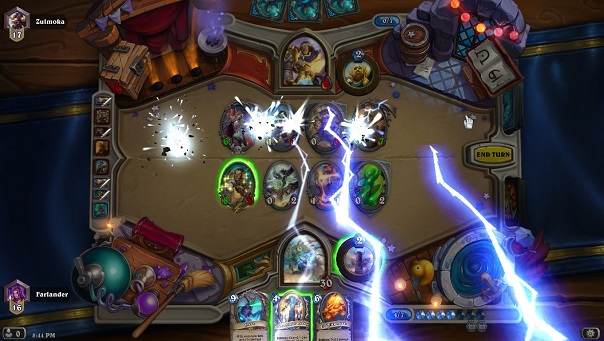
The 4 Types of Randomness in Hearthstone
What really defines strategic randomness is the small amount of possible outcomes – which means that both players can easily take them into account, and why this is the kind of randomness that most find fair even if they’re at the worse end of the stick.
Acceptable Randomness
Acceptable Randomness is when there’s a pretty big amount of outcomes, but it’s either small enough to define the possibilities, or they can be logically locked down. In terms of general gameplay, the best examples are what you and your enemy have in the decks. You know exactly which 30 cards you’re playing with, so with each card you draw there’s less possible outcomes in terms of what could be the next one.
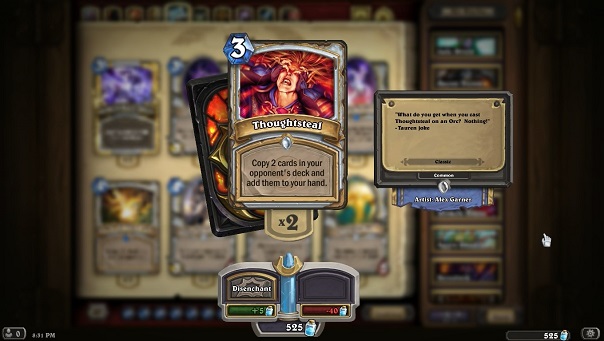
The 4 Types of Randomness in Hearthstone
Similarly, your opponent can have any of the 400 cards available to them (more if you’re playing Wild mode where there’s no card sets rotated out), but with each card they play you can exclude tons of possibilities based on what deck they seem to have. For example, an aggressive zoo deck that is based on overrunning you with a bunch of small minions is unlikely to have Deathwing in it. On that note, at one point I did put Deathwing in my zoo Warlock deck, and people absolutely did not expect it. Was so awesome when I used it. On the downside, because the card wasn’t synergistic at all with the rest of the deck, most of the time it was a dead draw in my hand.
In terms of specific cards with random effects, good examples are spells like Thoughtsteal – that copy 2 cards from the opponent’s deck. When you play against Thoughtsteal, you know what you may be up against since you know your deck. And if you’re the one to cast Thoughtsteal – it helps you define what is the archetype of the opponent’s deck.
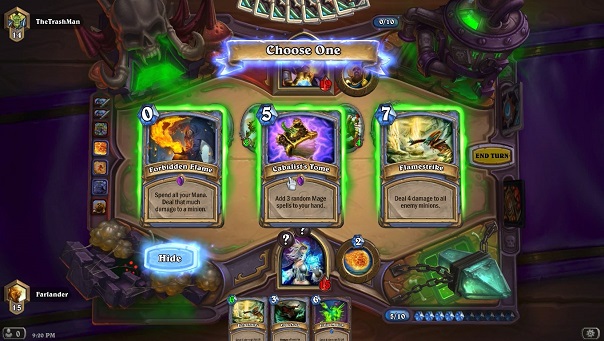
The 4 Types of Randomness in Hearthstone
Another good example are some of the cards with the discover mechanic, like Ethereal Conjurer. Discover gives you an ability to get a card in your hand out of 3 presented choices, all selected randomly from a certain pool (depending on the card). Ethereal Conjurer is a Mage card that discovers spells – so if your opponent plays it, you can deduce what could be the worst and best case scenarios for you and play around that.
So, while it can be frustrating when the opponent gets really lucky, usually players don’t get angry at this kind of randomness due to the fact that you can still reasonably conclude eventual outcomes.
Double-Edged Randomness
This is where things start to get tricky. Double-edged randomness is when there’s an effect that can either be average, really good for you, or really bad for you. The reason it’s tricky is because a single effect can put two players in wildly opposing emotional levels. If you get a result that’s really good for you, your opponent most likely will get really angry or frustrated, while you get really happy, and vice versa.
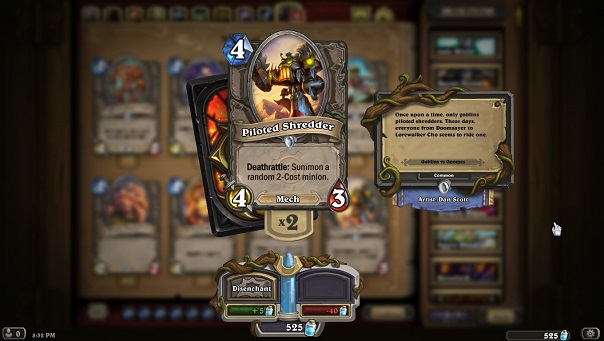
The 4 Types of Randomness in Hearthstone
A perfect example of this type of card is Piloted Shredder. It’s a 4-mana minion, that after its death summons a random 2-mana minion. In the days of the Goblins vs Gnomes expansion release, this card was pretty much an auto-include in every deck. Because, not only on average the minion you get would be pretty good, there were high enough chances to summon the best-statted 2-mana minion in the game – Millhouse Manastorm who is a legendary 2-mana 4/4 with a disadvantageous battlecry, but very good stats which is all that matters for Piloted Shredder. However, there were also high enough chances to summon a Doomsayer, which can be either really helpful or destructive depending on if you’ve got board control or not, but also to summon a very weak minion.
An interesting side-effect of a card like Piloted Shredder, though, is that overtime it gets weaker and weaker. This card was exceptionally strong when it had just 65 possible minions to choose from, but now that it’s only in the Wild format and there’s more than 100 possible 2-mana minions, it’s not an auto-include anymore. Still a good card, especially in a N’zoth deck, and it will never get to a level of being bad, but not as potentially powerful and swingy.
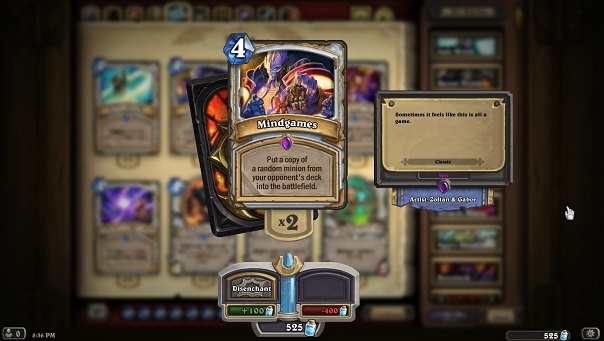
The 4 Types of Randomness in Hearthstone
A more consistent example of this type of randomness would be Priest’s Mind Games or Shaman’s Ancestor’s Call. Mind Games summons a random minion from an opponent’s deck, which, depending on the minion, can be a card that wins you the game, or loses you the game because you got a 1/1 for 4 mana and lost your turn. Similarly with Ancestor’s Call, depending on what kind of minions it will put from both hands.
Absolute Randomness
This is the most controversial type of randomness. The reason being is that, just like the double-edged type, it can be really swingy emotionally, but also you really can’t strategize around it at all.
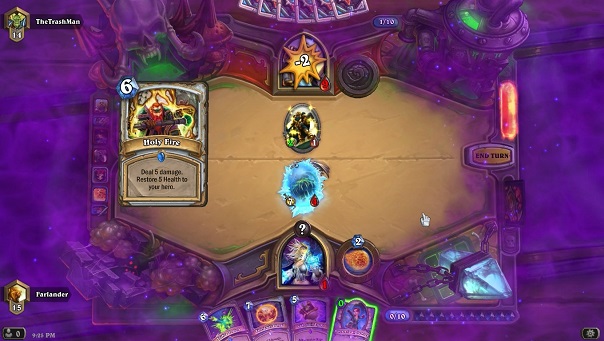
The 4 Types of Randomness in Hearthstone
Now, the most obvious example of this would be a card like Yogg-Saron. You cast enough spells, you put Yogg out and shit happens. To be fair, though, Yogg in particular tends to be very fun for both players regardless of whose life it will ruin, just because of how ridiculous the effect can be.
But there are much more one-sided cards. For example, after the Mean Streets of Gadgetzan expansion, each class has a card in a vein of ‘Discover a Mage, Priest or Warlock’ card. So the pool in Standard for this kind of thing is about 200 cards. Now, while statistically speaking this is not an unbalanced action, when somebody plays this card against you there’s absolutely nothing you can deduce to figure out what card that could be. So, it can either be something reasonable, or either a legendary or a very strong card of a different class that you absolutely can’t play around. Whenever you build your deck or play against an opponent you don’t expect a Priest to become a Jaraxxus or a Warlock to get an Antonidas or a Mage to get Mind Control. And when this kind of thing happens, neither winning or losing actually teaches you anything.
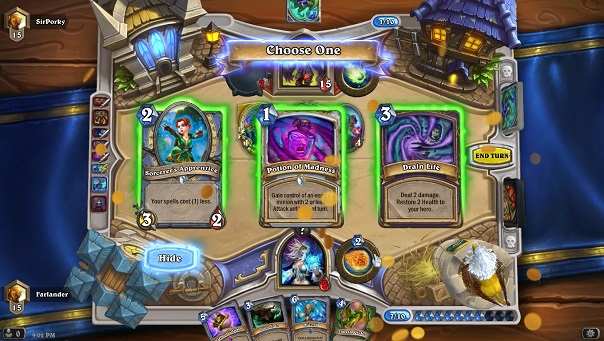
The 4 Types of Randomness in Hearthstone
So these are the 4 main types of randomness that Hearthstone has. I think the expectation from some of the readers would be for me to say that the first two types are good, and the second two are bad. But that’s not the case, neither of them is bad. They’re just different.
What I will say though, is that in a competitive environment the strategic and acceptable randomness are valued much more, which is why people with a more competitive mindset can be so frustrated with the cards of the latter two types. However, double-edged and absolute randomness can create absolutely unforgettable stories that are just fun to tell to others, and I would not want Hearthstone to miss that kind of experience.
This doesn’t mean that every card game needs those kinds of randomness, though. It all depends on the experience you want to provide. Ultimately in the grand scheme of things, I think Hearthstone does a pretty good job at balancing all these different types of random effects.
Thank you all for reading. Feel free to leave any comments below. If you’d like to keep an eye on my future blog posts, feel free to follow me on Twitter @farlander1991 :)
And if you’d like, consider supporting my work on Patreon! Thank you very much!
Read more about:
Featured BlogsAbout the Author(s)
You May Also Like







.jpeg?width=700&auto=webp&quality=80&disable=upscale)








